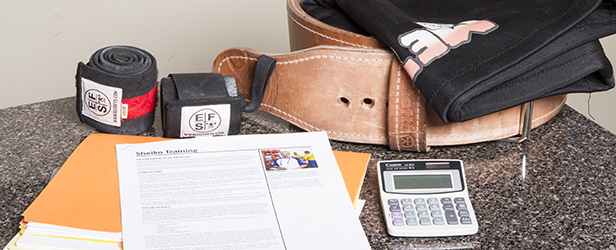
The topic of programming tends to be a popular one, whether it’s in regards to powerlifting, bodybuilding, or training athletes. This is understandable, as we know how important it is to not only train hard, but smart as well. There are many popular programs out there, including but not limited to:
- 5/3/1
- Westside Method
- The Cube
- Sheiko
- Smolov
...And the list goes on and on.
Questions in regards to these programs typically revolve around the same themes. Here are some examples of questions you’ve probably seen asked many times:
“What’s better, Westside or the Cube?”
“Can I use bands and chains in 5/3/1?”
“I’ve been doing 5/3/1 for a year, should I start training Westside now?”
“Can I do Smolov, use the percentages from Sheiko, incorporate the dynamic effort work from Westside, and use 5/3/1 for my accessory work?”
Okay, that last one might’ve been a bit extreme, but it’s probably not far off from a question you’ve seen before. These questions get asked again and again, but there seems to be no definitive answers to satisfy them. The reason for this is because often times people are asking the wrong questions. One of the biggest "A-ha!" moment for me was hearing Jim Wendler respond to the question about bands and 5/3/1. His response was something along the lines of, “If you have to ask if you’re allowed, you aren’t ready to use them." Before you ask, “Should I use bands?” you should understand WHY we use bands.
It is important to understand that these programs are examples of expert coaches utilizing principles for a specific need. It’s not the percentages in 5/3/1, or the use of bands in Westside training that makes these programs special. It’s the ability of the coaches who designed them to take training principles and organize them in a way that fulfills a specific purpose. This is, in my opinion, why so many people try Westside training, and then decide it doesn’t work. They took a sample routine off the Internet, focused too much on specifics, like the use of bands, and spun their wheels without making much progress (I’ve been guilty of this myself). They neglect to understand that what makes Westside training Westside is Louie's ability to modify the program for his lifters and their weaknesses/needs/goals. This is why using a conjugate system really shouldn’t be referred to as Westside training unless you’re actually training at Westside Barbell. The coaching and environment is what makes it so successful, not a perfect concoction of sets/reps you can find on a forum somewhere.
This is why good coaching continues to be so valuable even with all the information and programs available. Brian Carroll is coming out with an eBook on training, and I guarantee it will be a treasure trove of information. But getting personally coached by Brian will always be superior to only reading the book. This is because Brian understands how to evaluate a lifter, and then program for them personally. He not only knows the principles behind programming, he understands them. This is something that takes a combination of education and years of under the bar experience.
This isn’t to say that just following a book’s program is always a bad thing. Programs that are written out in eBook form like 5/3/1 are great for several reasons:
- They give you the framework to begin training consistently.
- They allow you to begin training, using proven principles without having to be an expert on them.
- They provide a reference point to go back to if you find yourself getting overloaded with information.
How you develop from there makes all the difference. If you are a novice, you’ll simply follow the program. If you are an intermediate lifter, you’ll begin to understand the program. When you’re an advanced lifter, you won’t look at it as a program anymore. That’s why initially it can be effective to simply look at a spreadsheet for 5/3/1 and follow it—reading through Jim Wendler’s explanations and descriptions of training principles is beyond valuable in the long run.
Much of this depends on your training age. If you’re just beginning to train, it will be important to just stick to a program and follow it so you can be consistent and work on the basics. As you advance, you don’t even necessarily need to make it more complicated, but you do begin to understand WHY you train the way that you do. Over time that understanding breaks the constraints of a program and ends the questions of, “Am I allowed to do _______?” You’ll begin to learn how to make programs work for you. You yourself will determine success or failure, not the program.
When you begin to understand these concepts, you stop looking at a program as good or bad. You begin to look at the principles behind the programming and why the coaches designed them as such. Instead of only knowing programs as 5/3/1, the Cube, or Westside, you should begin to learn about the principles of linear, block, and concurrent periodization. This doesn’t mean you have to be an expert on everything, but understanding the principles behind them will add more to your training toolbox. It takes time, and I’ve still got a ways to go myself. It’s a daily process you should be engaged in as a lifter, especially if you’re a coach. Train hard, learn from others, and remain humble and driven in the process. Remember that programs are tools and they’re most effective when you learn how to make them work for you.









